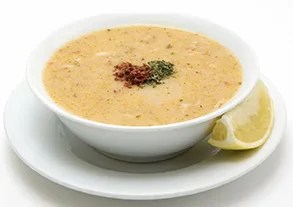Cooking with kids who have special needs such as autism, sensory issues, or learning disabilities can be challenging, but the ability to make a meal is a valuable life skill and including kids in the kitchen has many lasting benefits. Here are five tips to help those with special needs learn to cook.

Maybe your child with autism must eat a special diet, or your tween with sensory issues is pickier than you ever could have imagined, but getting them into the kitchen to take part in food preparation can go far in getting them to be more open with what they try. Helping your child learn to cook will do more than expand his taste buds, too—it can help with social interaction (if you pair him up with a sibling or friend); strengthen his motor skills; develop better communication skills; and teach sequencing and following directions. And surprise: Your budding chef is likely to have some fun along the way, too.
“Whether a person is living at home, in a group home, or in their own apartment, cooking is a very important life skill and one that’s needed every day,” says Beverly Worth Palomba, author of Special Day Cooking: A Life Skills Cookbook (Special Day Publishing; $19.95). “We want our children to be as independent as they can be, and sharing a recipe with family or friends makes you feel great. Up goes your self-esteem and self-confidence!”
 The recipes in Palomba’s book are in large type and formatted in consistent, easy-to-follow steps. They are safe—needing only a microwave, toaster or blender, and a plastic knife to cook (sometimes no equipment at all)—and can all be completed in one hour or less. You’ll find simple staples such as a chicken salad sandwich and Jell-o alongside surprises including tortellini pesto soup and easy hummus. Arm yourself with a copy—or see this recipe for Palomba’s take on creamy tomato and rice basil soup—and invite your child into the kitchen for some culinary adventure.
The recipes in Palomba’s book are in large type and formatted in consistent, easy-to-follow steps. They are safe—needing only a microwave, toaster or blender, and a plastic knife to cook (sometimes no equipment at all)—and can all be completed in one hour or less. You’ll find simple staples such as a chicken salad sandwich and Jell-o alongside surprises including tortellini pesto soup and easy hummus. Arm yourself with a copy—or see this recipe for Palomba’s take on creamy tomato and rice basil soup—and invite your child into the kitchen for some culinary adventure.
Use pictures. “When words aren’t helpful, visuals are helpful,” says Jessi Walter Brelsford, founder of Taste Buds Kitchen in Manhattan, which offers cooking classes geared specifically to youngsters with special needs. She suggests drawing up pictures of ingredients to have on hand during food prep. Parents can also clip photos out of magazines or from food labels to create visual aids.
Pre-measure ingredients. While measuring can help teach math and spatial concepts, it may be too challenging for some kids. Adapt your approach to the individual child—combining and mixing ingredients still yields a finished product a child can be proud of.
Limit loud noises. “The kitchen is a multi-sensory environment, so we focus on the senses that kids need to be developing,” Walter Brelsford says. That may mean mixing by hand instead of with electrical equipment.
Establish a routine. Consistency and familiarity are good. Always start by washing hands and putting on aprons, then dive into the cooking.
Take your time. Ah, the sensory experiences of cooking—tasting, smelling, touching different textures, seeing different colors! Allow your child to take time to engage her senses, and take breaks as needed. Set your pace to the individual child. “For some children with autism, we might go very slowly, but for a child with ADHD we might keep the pace quick so as to hold the attention,” Walter Brelsford says.





















